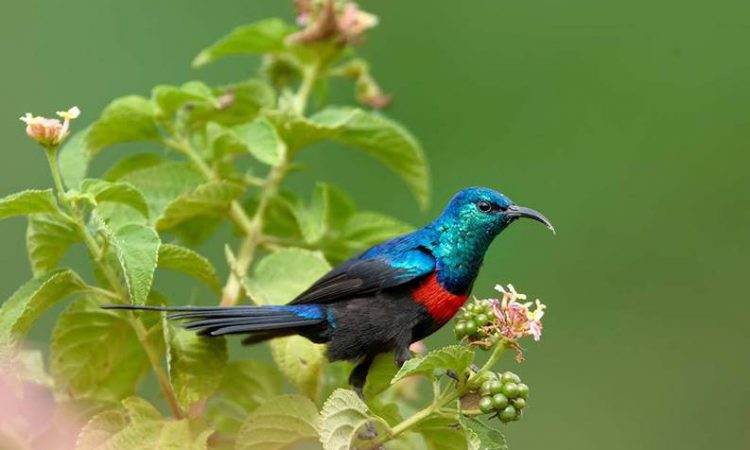Tarangire National Park is known for its stunning landscapes, ancient baobab trees, and large herds of elephants. Spanning over 2,850 square kilometers, it offers a quieter, less crowded alternative to Serengeti or Ngorongoro, making it perfect for those seeking an intimate wildlife experience.
The park centers around the Tarangire River, a lifeline for animals during the dry season, drawing huge numbers of wildlife including elephants, lions, giraffes, zebras, wildebeest, and a variety of antelopes. It’s also a birdwatcher’s paradise, with over 500 species recorded.
What makes Tarangire truly special is its raw, untouched beauty—rolling savannahs, swamplands, and clusters of baobabs create a dramatic, almost otherworldly setting. It’s particularly famous for hosting one of the highest concentrations of elephants in Africa during the dry season.

🐘 Iconic Wildlife in Tarangire:
Tarangire National Park is a haven for wildlife lovers, offering an incredible variety of species in a stunning setting.
Elephants – The park boasts one of the largest elephant populations in Tanzania. It’s common to see herds of these majestic giants roaming the plains or gathering near the Tarangire River.
Lions – Often seen lounging under trees during the heat of the day. They are among the park’s most frequently spotted predators.
Leopards & Cheetahs – Though more elusive, both of these big cats are occasionally seen, especially in quieter, wooded areas.
Buffalo – Large herds are commonly found grazing across the open plains.
Zebras & Wildebeests – Particularly abundant during the dry season migration into the park, when they search for water and fresh grazing.
Giraffes – Gracefully browsing in the savannah and acacia woodlands, they are a common and photogenic sight.
Baboons & Monkeys – Frequently seen in troops near riverbanks and campsites, offering entertaining behavior to watch.
🐦 Birdlife:
With over 550 species recorded, Tarangire is truly a birdwatcher’s paradise.
Notable species include yellow-collared lovebirds, lilac-breasted rollers, hornbills, and a wide variety of eagles and vultures.
From vibrant colors to majestic raptors, the birdlife here is just as captivating as the larger animals.
🐾 Unique Animals You Might See:
Some rarer and more unusual species that lucky visitors might spot include:
Fringed-eared oryx – With their striking horns and pale coats, these antelopes are adapted to arid environments.
Gerenuk (giraffe-necked antelope) – Their long necks help them browse for food higher than other antelopes.
African wild dogs – Rare and elusive, but sometimes seen in the less-visited areas of the park.
Kudu – Both lesser and greater kudu may be found, easily recognizable by their impressive spiral horns and shy nature.
🌍 Location
Northern Tanzania, about 2 hours (120 km) from Arusha.
Part of the northern safari circuit, often combined with Serengeti and Ngorongoro.
🐘 What It’s Famous For
Elephants! – Massive herds, especially in the dry season.
Giant baobab trees – ancient and impressive.
Seasonal migration of animals in search of water.
Less crowded than Serengeti or Ngorongoro, making for a more peaceful safari.
🦓 Wildlife Highlights
Elephants, lions, leopards, cheetahs
Zebras, wildebeest, giraffes, buffaloes
Over 550 species of birds – birdwatcher’s paradise!
Also: impalas, ostriches, warthogs, hartebeests, baboons, and more.
🏞️ Landscape
Rolling grasslands, acacia woodlands, swamps, and river valleys.
The Tarangire River is the park’s lifeline, especially in the dry season (June–October).
📅 Best Time to Visit
Dry season (June to October): Best wildlife viewing; animals concentrate around the river.
Green season (November to May): Beautiful scenery, fewer tourists, lots of birds and newborn animals.
🚙 Activities
Game drives (morning, afternoon, or full-day)
Walking safaris (with a guide and ranger)
Birdwatching
Cultural visits to nearby Maasai or Barabaig communities
Night safaris (in select private areas outside the main park)
🏕️ Accommodation
Luxury lodges, tented camps, mid-range campsites
Some accommodations have views of the river or waterholes
📌 Fun Facts
Tarangire has one of the highest concentrations of wildlife during the dry season.
The baobab trees can live for over 1,000 years.
Tarangire is named after the Tarangire River that flows through it.
